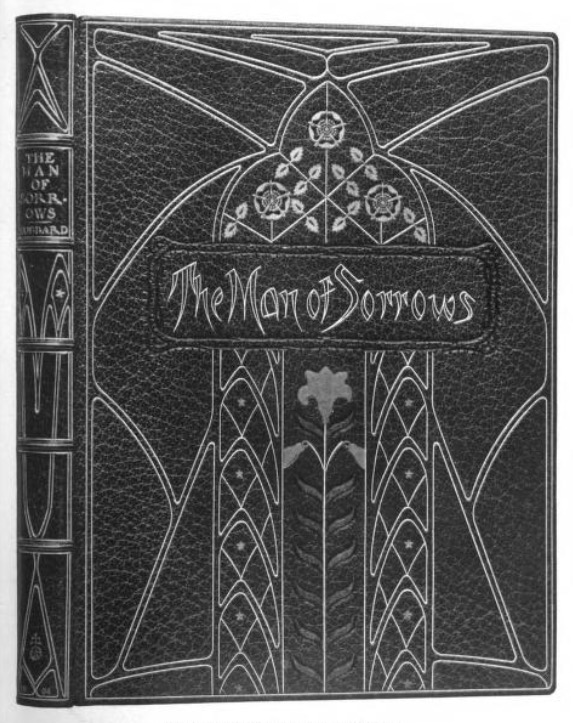LOUIS H. KINDER, East Aurora, N. Y. Author of “Formulas for Bookbinders.”
ART MAGAZINES are giving us an abundance of literature relating to bookbinding, written for the most part by amateurs. As a rule these articles are confined to a very vague description of that part of the process known in the technique as “forwarding,” and giving much preference to the method employed by master binders of earlier days. In other instances these articles deal exclusively with designs. Only on very rare occasions do these good people venture to tell us anything of the difficulties in gold tooling, which they must surely encounter in at least as great a degree as the practical finisher.
But perhaps what are considered grave difficulties by the practical worker, who is required to make every stroke count, are looked upon by the amateur, with whom time is no object, as little mishaps really to be expected and unavoidable. It is my object, in these few lines, to point out the common difficulties met with in hand-tooling, and to give a few suggestions as to how they may be mastered. The work to be considered is the gold-tooling of full levant bindings. Usually the amateur proceeds thus: The leather having been crushed, the design is marked off or blinded-in with the tools, as the case may require, and the depressions are then penciled in with white of ‘ egg, which is usually diluted with a little vinegar. When this is dry, the actual work of tooling commences and is accomplished by taking up the small pieces of gold leaf with the heated tools and pressing it into the corresponding depressions in the leather.
The surplus gold is then carefully removed with a piece of woolen flannel and the operation repeated till the whole design appears on the cover in gold. If the proper heat is used and the necessary skill exercised, the work will be well done. However, this process is slow and generally uncertain in results, and therefore impractical. If the design is made up of fine lines they will usually be found defective, showing tiny breaks in the gold; if heavy, solid ornaments are employed, it will be found that the gold only partially adheres. Of course, these defects can be remedied by going over the faulty impression a second time, and this the amateur does, but it must be admitted that this work of patching up means a waste of much valuable time, to say nothing of its nerve-wrecking influences. Nor are these defects generally so well remedied as to be entirely unnoticeable in the finished work.
The other method, much more practical, and employed by all practical workers, is as follows: After the leather has been crushed and the design blinded-in, a coat of some good glue filler is applied. When dry, the cover is sized with white of egg (glair) and when this is dry a double layer of gold leaf is applied, covering the entire design of one side of the book. The gold leaf is made to adhere to the leather by the use of a little olive oil or vaseline, which is applied with a little bunch of cotton batting. The whole design of one side of the book is then tooled and the surplus gold removed in the usual way with flannel. If vaseline is used for the laying-on of the gold leaf, it will be necessary to slightly wash the cover with gasoline in order to remove the grease. This method, in the hands of an experienced finisher, is usually fairly successful as far as the “holding” of the gold is concerned.
However, a little mending is generally necessary, even in this case, particularly so if the design is an intricate one. Yet, even though this method is far more practical and more certain in results than the one first mentioned, it does not by any means solve the problem of good finishing on levant, nor does it render the process as easy of execution as might be desired. Only a finisher with considerable experience and skill can hope to complete the work without having a great deal of mending to do and the work will still be faulty. A cover so treated will readily stain in handling, and finger marks will be plainly visible. Of course, this may be eliminated by giving the cover a coat of varnish, but by this means the beauty of the highly polished cover is forever ruined. No one has yet compounded a varnish which will preserve the exquisite lustre of a polished levant cover. Thus the only remedy lies in the possibility of concocting a glair which in a degree will be stainless and capable of yielding a high lustre in polishing. It must also fix the gold securely without any tendencies to fill in, and in order to render more certain the “holding” of the gold, it must be far less sensitive in this respect than white of egg (glair). In this case, as in all others, absolute perfection is an utter impossibility, and in the writer’s experience, which is not limited to theories, but many years of practice at the bench, the nearest approach to a glaire embodying all of these excellent properties is a combination of egg albumen with shellac.

